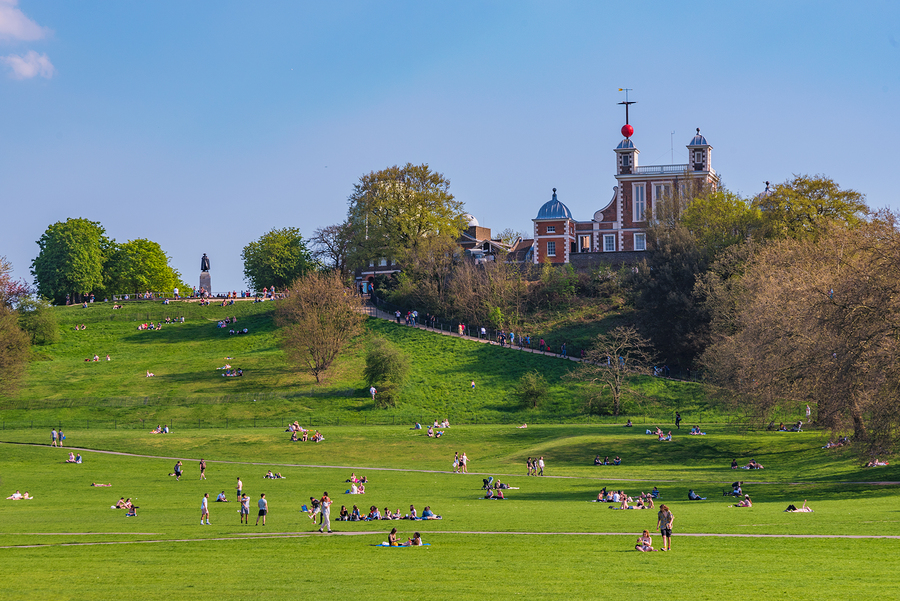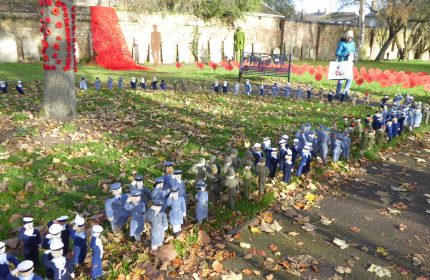A dozen or so things you never knew about Greenwich
The third in our series of 'I never knew that about the beauty spots of Britain'
Britain is the most beautiful country in the world when the sun shines. And even when it doesn’t there are myriad tales and facts galore to enhance the beauty, whatever the weather. Here are some of them – they may make you want to go there…
A dozen or so things you never knew about Greenwich
- Greenwich, seen from across the River Thames was said to be Sir Christopher Wren’s favourite view and is considered one of the finest architectural panoramas in Britain. Not only is it a World Heritage Site, it can boast London’s oldest park, Greenwich Park, which was laid out in 1433, and the best Georgian street in London, Croom’s Hill.
- The Royal Naval Hospital stands on the site of the former Greenwich Palace, otherwise known as the Palace of Placentia, where Henry VIII and his two daughters Mary and Elizabeth were all born. It was at Greenwich that Sir Walter Raleigh placed his cloak over a puddle so that Elizabeth I wouldn’t get her feet wet. And it was here in 1587 that Queen Elizabeth signed the death warrant of Mary Queen of Scots.
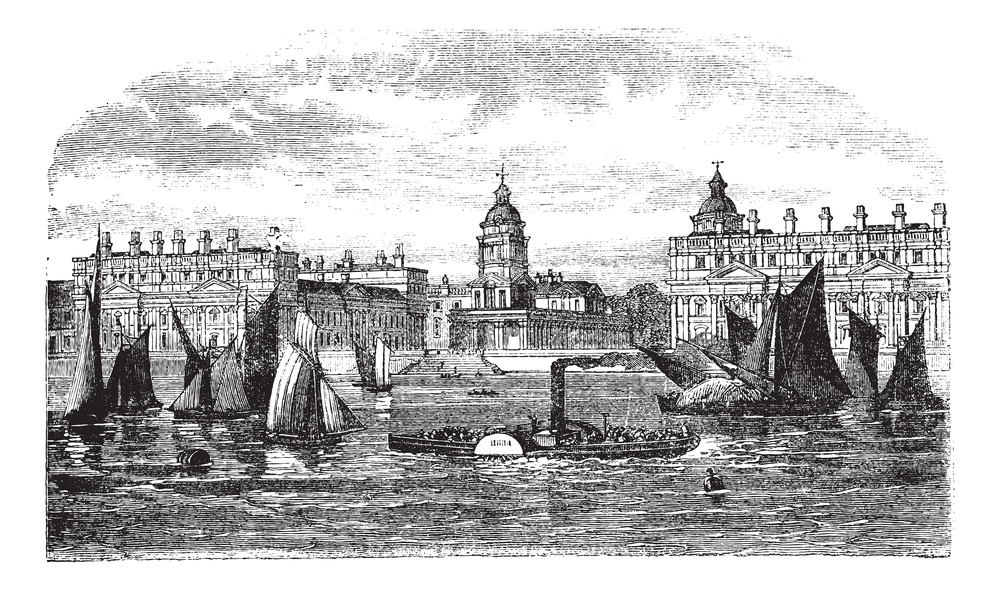
Greenwich Hospital or Royal Hospital for Seamen, Greenwich, England, during the 1890s, vintage engraving. Illustration of Greenwich Hospital with boats in front. Trousset encyclopedia 1886 – 1891
- The Queen’s House, designed by Inigo Jones, was the first Classical building to begin construction in Britain. It was begun in 1616 but wasn’t completed until 1635, thirteen years after another building by Inigo Jones, the Banqueting Hall in Whitehall, was completed. The iconic Tulip Stairs inside the Queen’s House were the first self-supporting spiral stairs to be constructed in Britain.
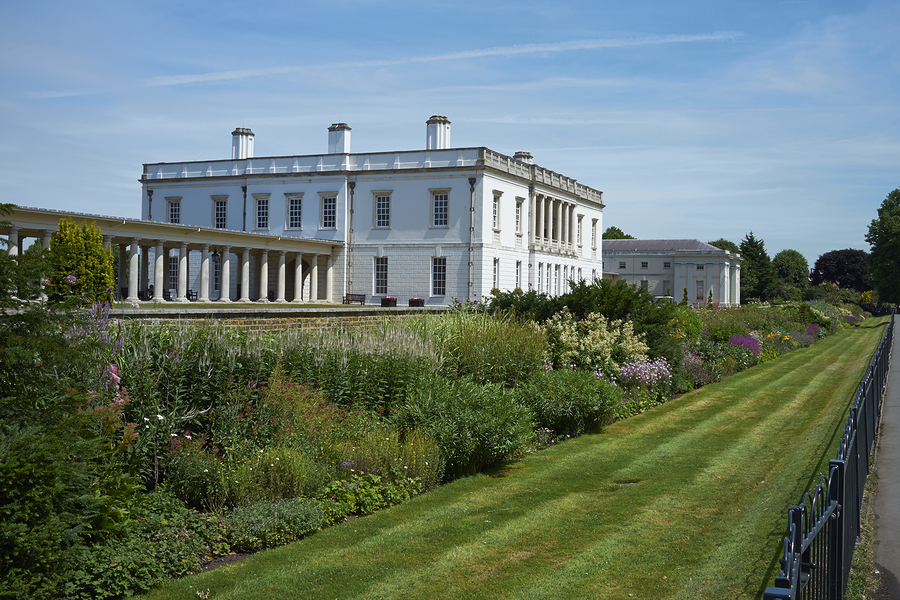
Queen’s House at Greenwich in London, United Kingdom. Designed by Inigo Jones
- The roof of the Painted Hall is the largest single painting in Britain. It took Sir James Thornhill 20 years to complete and in recognition of his work he became the first British artist to be knighted. The composition of paintings on the walls and roof together cover 40,000 square feet.
- In 1884 a conference in Washington decided to use the Green Meridian as the Prime Meridian because at that time over half the world’s shipping sailed past Greenwich into London, and virtually all the world’s shipping used Greenwich-based charts. For the same reasons, the world sets its clocks by Greenwich Mean Time. The Shepherd Clock built into the wall of the Royal Observatory in 1852 was the first public clock ever to show Greenwich Mean Time.
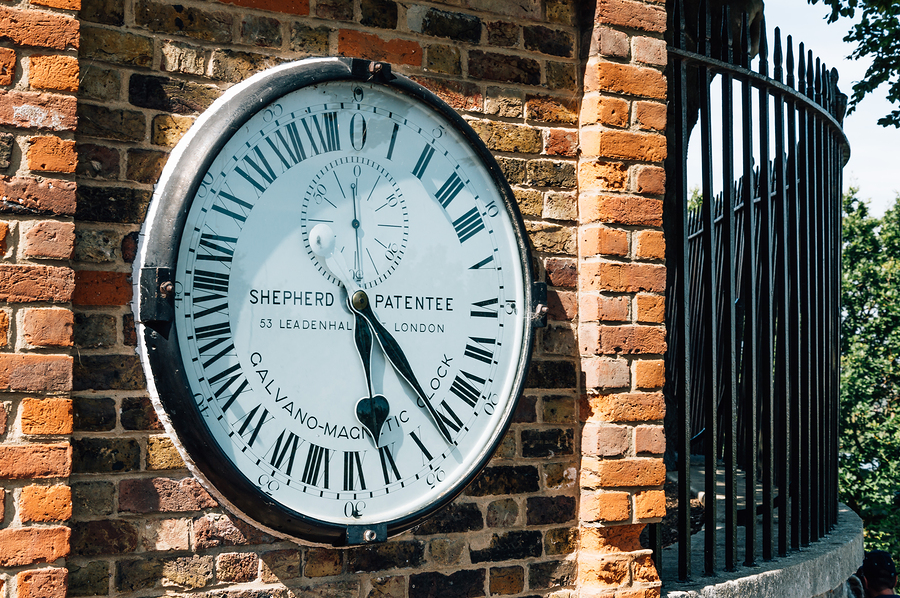
The Shepherd gate 24-hour clock outside the Royal Greenwich Observatory. Galvano magnetic clock.
- Greenwich station, handsomely designed and built by George Smith in 1840, is one of the oldest, if not THE oldest, station in the world. It was built for the world’s first suburban railway, the London and Greenwich Railway, which was constructed between 1836 to 1838. The London and Greenwich Railway was also the world’s first raised railway being supported on 878 arches along its four and a half mile route from London Bridge.
- In 1847 the railways adopted Greenwich Mean Time as the standard time for their timetables. This resulted in GMT becoming the standard time for the whole of Britain and eventually the world.
- The first British car, the Butler Patent Velocycle, was invented and built in Greenwich in 1887. Inventor Edward Butler lived at 31 Ashburnham Place and the Velocycle was built at Merryweathers in Greenwich High Road.
- In 1891 Greenwich High Road became one of the first roads in the world to be lit by electricity when it was powered from Sebastian Ferranti’s power station at nearby Deptford – the world’s first large-scale power station.
- The Royal Naval Hospital was the setting for the first Son et Lumiere performance seen in Britain, in 1957.
See part three – The Peak District
Find out more about Christopher Winn’s ‘I Never Knew That’ here
Latest posts by Christopher Winn (see all)
- A dozen or so things you never knew about Loch Lomond and Dunbartonshire - October 20, 2021
- A dozen or so things you never knew about Bedfordshire - May 18, 2021
- A dozen or so things you never knew about Berwickshire - March 18, 2021
- A dozen or so things you never knew about The Surrey Hills - January 26, 2021
- A dozen or so things you never knew about historic Monmouthshire - February 10, 2020









